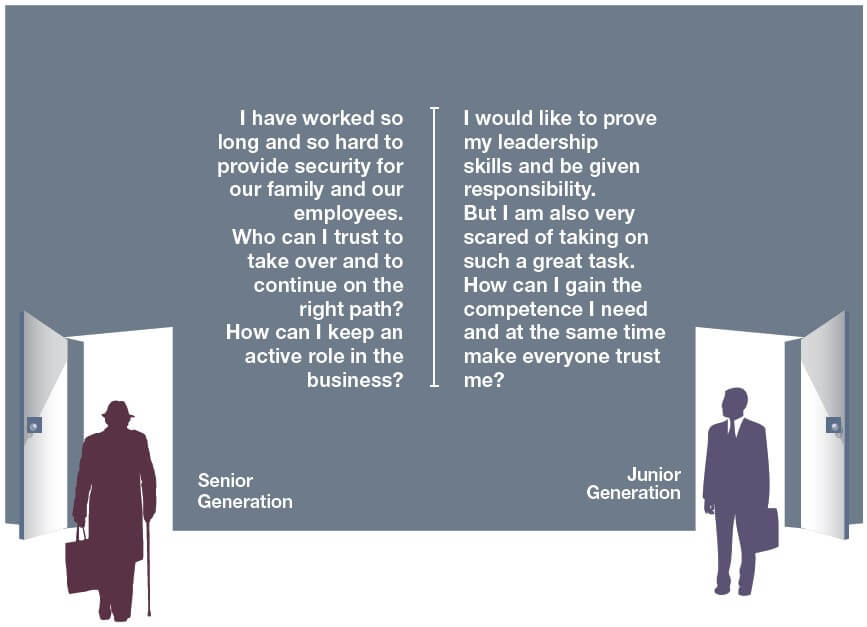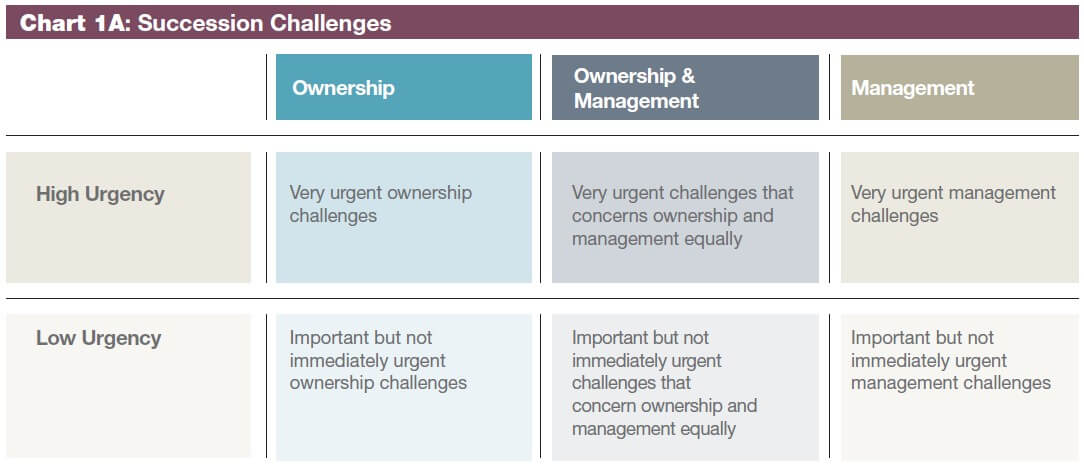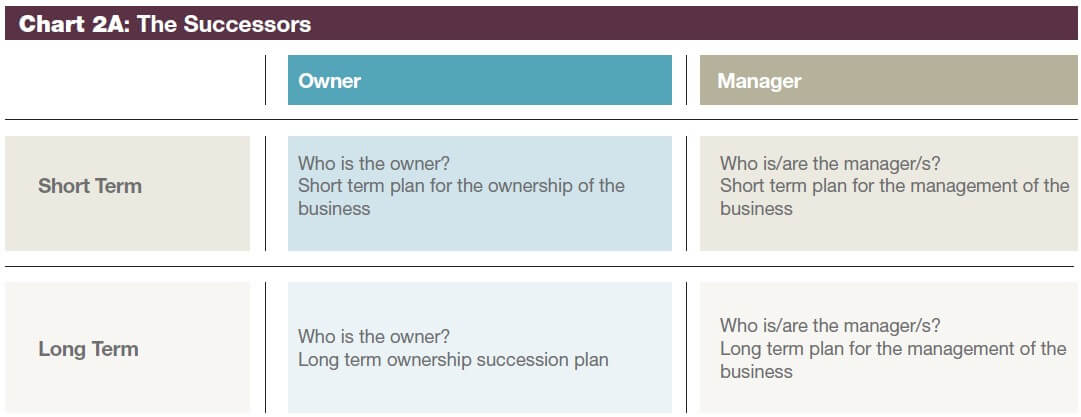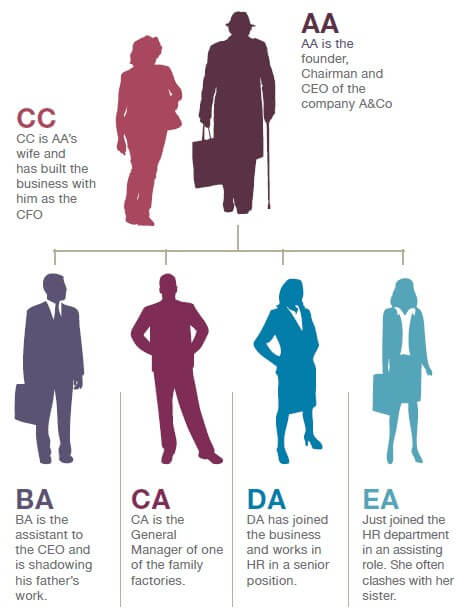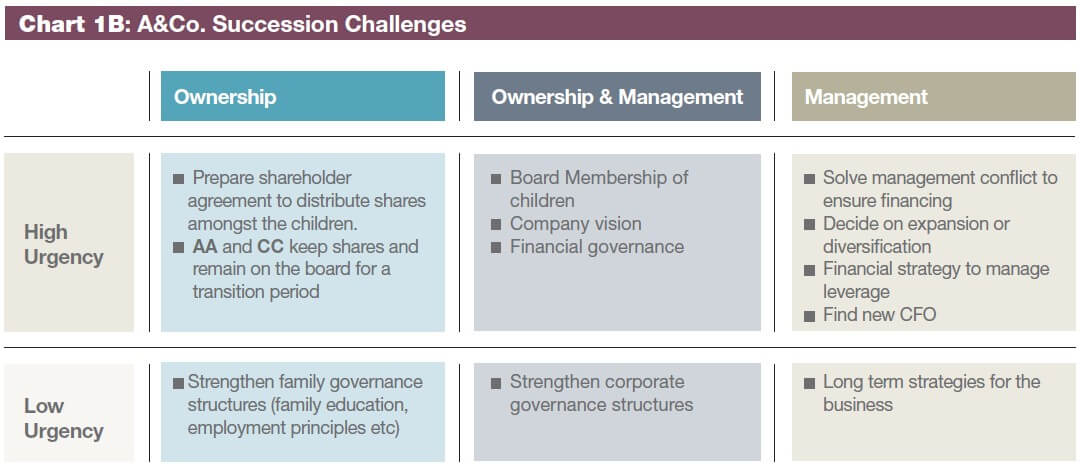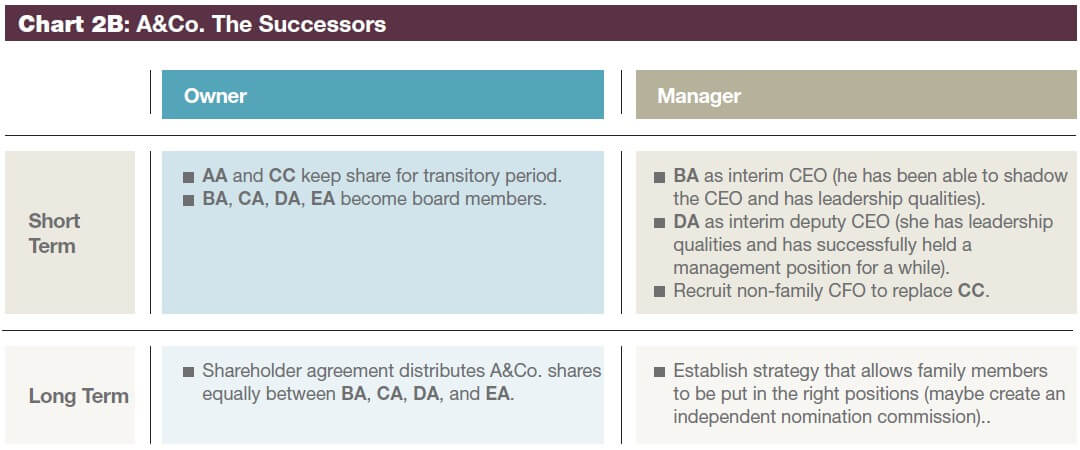LEGACY
What is Family Business Succession?
Managing succession is one of the greatest challenges family businesses face. By realising that it is a topic where the subjective perception trumps objectivity, and by accepting that there is no one right answer, family businesses can approach the issue with more structure, before it becomes a matter of urgency.
Succession? I’d rather not talk about it…
There is something about the process of handing over power and responsibility to another person that makes us cringe a little, makes us want to turn to something else and not confront the issue ever again. Do we fear that by allowing someone else to take over our roles we lose part of who we are? Is it a natural human reflex? Or is it just because we feel that no one else can continue our work? Whatever the reason, succession touches upon many issues we normally prefer to avoid. This makes it an extremely sensitive and subjective issue, with perspectives influenced by our life’s experiences and sometimes inexplicable emotions.
For family businesses, succession has even more dimensions: The impact of succession decisions on the family’s psychology can be extreme and therefore family businesses need to approach the issue with much care and feeling. As it often is the harmony, strength and balance of a family that determines the success of a business, it is crucial to keep this balance whilst finding a succession solution.
Family businesses and the black hole
In family-owned companies the most frequent succession questions are:
• Can we find one leader who can take over the full responsibility or should we split leadership?
• If we split leadership, how can we ensure that we do not reach a deadlock when we have to take decisions?
• How should corporate control be distributed amongst various branches of the family?
• Who should be allowed to own shares and vote in assemblies and sit on boards?
• Can family members take any positions disregarding their qualifications and merit?
• How can family business leaders remain active in advisory positions and at the same time hand over part of the responsibility to the next generation of leaders?
It is not hard to understand that for some family business members succession seems like a big black hole; the closer they get to it the more they get drawn into something beyond their control. On the one hand, the senior generation, that has been taking care of the business for many years and has borne the burden of responsibility, would like to see their work continued and provide for the next generations. On the other hand, the junior generations want to make their mark in the world, use their energy to show what they can do, but also very often shy away from the serious tasks and responsibilities that await them.
Deconstruct to reconstruct
The only fairness in the quest for a succession plan is that all generations of a business family are equally anxious about it. Be it the leader, the young manager, or even the non-active family member, everyone fears for the strength and unity of the family during this process.
One way to structure the approach to succession is to “deconstruct” the situation and classify the current family challenges and business challenges facing the family. The family or individual family members could start by establishing a list with the most urgent worries and challenges they are facing. Once the list has been established, the family member can categorize each item by establishing if it concerns “Management Succession” or “Ownership Succession”:
Management Succession: This concerns the decision of who will take over the day-to-day management of the business. Management succession should (and can) be treated in a very rational, facts based manner. Some families, especially in Europe, come to the conclusion that it is necessary for a non-family member to manage the business, for example during a time of transition. Other families want to have a minimum number of family members in management positions, but base the selection on their qualifications rather than representation of family branches.
Ownership succession: This addresses a different matter; ownership succession establishes who owns the business. It addresses for instance the inheritance of shares in the business, whether non-family members can be shareholders, and how the wealth is distributed amongst the family.
A simple tool for the family to make the categorisation are the following charts:
Chart 1A helps to find out, whether a challenge concerns the ownership of the business, if it is purely a management matter or if it concerns both. It is important to cristallise which issues are the most urgent to be addressed, as this can influence the succession plan.
Once the top challenges are categorised, Chart 2A will help to establish, which family members need to be put in which position to address them. The chart allows to plan for the immediate future, as well as for a longer term strategic plan.
Family members can use the chart to think about scenarios for their families or structure it as an exercise for the whole family. The most important element, however, is to ensure that there is a constructive dialogue on the subject between all generations and between active and passive family members.
Handing over A&Co. – A family business succession case
To exemplify how business leaders can use systems to manage succession, we can follow the short example of AA and his company, A&Co.
AA is the founder, Chairman and CEO of his company A&Co, which produces spare parts for a global car brand. His two sons and two daughters have recently joined the family business: BA is working as assistant to the CEO, his brother CA is working as General Manager of one of the factories. The sisters DA and EA both work in the HR department, with DA retaining a senior position and EA starting out in an assisting role.
Due to health issues AA is suddenly facing a difficult situation: He will no longer be able to run A&Co. As he is taken by surprise by this situation, he was not able to observe and groom one of his children to take over as a leader right away.
AA is very worried with his succession decision, as he does not believe that any of his children is ready to take over his role. His main worries are the following:
• AA worries about the continuity of the business and its expansion opportunities.
• AA’s wife CC built the business with him and has always been involved in the financial side as CFO. However, now she wants to focus on taking care of him during his hospital stay.
• His daughters do not agree with each other and have repeatedly clashed. However, both are very well qualified and have a good business sense.
• AA is thinking about acquiring two thirds of the shares of one of his competitors.
• However, the financing proves difficult due to some conflicts in his (non-family) management team. Another option he has been thinking about is diversifying into other manufacturing sectors.
• Currently, he is the only family member on A&Co.’s board.
• The business is successful but heavily leveraged.
• Even though he has to leave the day-to-day business, he would like to stay involved in A&Co.
AA has used Chart 1B to assess under which categories his worries could fall.
After having structured his succession challenges, AA can now think about the talents and experiences of his family members and position the right people to take over responsibilities and roles in Chart 2B:
With this chart, AA can map out several scenarios of how to act in the short- and long-term. He will realise that his children and his wife have to agree on the plan, and that there have to be clear procedures in place that will allow them to take decisions and improve the system put in place.
However, most importantly of all, the family has to ensure that all members agree on the basic principle that they want to keep the business on track, that they will do their best to collaborate and communicate and take time to address any threats to the family harmony.
Conclusion
In the end, any succession decision will be a risk. However, family business leaders and their family members can ensure that that risk can be a calculated one.
Family businesses have to keep a clear vision and focus on the big picture. The family has to realise that succession is not an impossibility, it is just one of many challenges and its importance, whilst paramount, should not be blown out of proportion. It is an ever-changing process, that needs family members of all walks of life to make it a strengthening experience for all.
Tharawat Magazine, Issue 14, 2012


